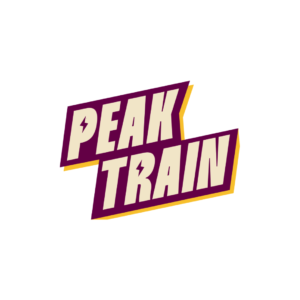Why the Average Price of Driving Lessons Varies by Region
When it comes to learning how to drive, one of the key factors that learners must consider is the average price of driving lessons in their area. Whether you live in a bustling city or a quiet rural town, the cost of driving lessons can vary significantly depending on your location. But why is there such a wide range of prices across different regions? In this blog, we’ll explore the main reasons why the average price of driving lessons fluctuates depending on where you are, and how understanding these factors can help you plan your budget effectively.
1. Urban vs. Rural Areas
One of the most significant factors affecting the average price of driving lessons is whether you live in an urban or rural area. Driving lessons in cities often cost more than those in smaller towns or rural regions.
Why Urban Areas Cost More:
- Higher Demand: In cities with dense populations, there are more learners competing for lesson slots, which allows instructors to charge higher rates.
- Complex Driving Conditions: Urban areas tend to have more challenging driving environments, with heavy traffic, complex road systems, and frequent use of multi-lane roads and roundabouts. This complexity often leads to higher lesson prices, as learners require more time to become comfortable in these conditions.
- Instructor Costs: Driving instructors in urban areas face higher overhead costs, such as fuel, parking, and vehicle maintenance, which are reflected in the price they charge for lessons.
In contrast, rural areas generally have quieter roads and less demand for lessons, resulting in lower costs.
Also Read: How to Save on Driving Lesson Prices
2. Regional Demand for Driving Instructors
Another key factor influencing the price of driving lessons is the regional demand for driving instructors. Areas with a high demand for lessons but a limited number of instructors often see higher prices.
How Demand Affects Prices:
- Shortage of Instructors: In some regions, there may be a shortage of driving instructors, particularly in smaller towns or regions with fewer training facilities. When demand outstrips supply, instructors can charge more for their services.
- Higher Competition: In cities or areas with many driving schools and independent instructors, competition can drive prices down. Learners have more options and can compare rates, which may lead to more affordable pricing in these competitive regions.
- Wait Times: Regions with long waiting lists for driving lessons may see prices increase as learners are willing to pay more to secure an instructor sooner.
By understanding the local demand for instructors, you can get a better idea of how this influences the price you’ll pay for lessons.
3. Cost of Living in the Region
The overall cost of living in a particular region also plays a major role in determining the average price of driving lessons. In areas where the cost of living is higher, you can expect to pay more for lessons.
Why Cost of Living Matters:
- Fuel and Maintenance Costs: Instructors in areas with higher fuel prices and vehicle maintenance costs need to account for these expenses in the prices they charge.
- Instructor Wages: In regions where the cost of living is higher, instructors need to charge more to maintain a sustainable income. This is especially true in expensive cities where everything from rent to insurance costs more.
- Insurance Rates: Driving instructors’ insurance premiums vary by region, and areas with higher accident rates or traffic congestion often see increased insurance costs, which are reflected in lesson prices.
If you live in a region with a higher cost of living, the prices for driving lessons will likely be higher as instructors cover their operational costs.
4. Availability of Test Centres and Driving Routes
The availability of driving test centres and the complexity of driving test routes in a region also play a role in the pricing of lessons. Regions with limited access to test centres may see increased prices due to the higher demand for instructors who are familiar with the test routes.
How Test Centres Affect Prices:
- Test Centre Proximity: In regions with few test centres, learners may need to travel farther for their tests, and instructors may charge more to cover the extra time and fuel required to travel to and from the test centre.
- Test Route Familiarity: Instructors who are familiar with the specific test routes in high-demand urban areas can charge more for their expertise in preparing learners for those routes.
- Longer Lesson Times: In regions with fewer test centres, learners may need longer lessons to travel to the test routes and practice in relevant areas, which can increase the overall cost of lessons.
By considering the availability and proximity of test centres, you can better understand how this affects the cost of driving lessons in your area.
5. Type of Lessons: Manual vs. Automatic
The type of driving lesson you choose—manual or automatic—can also vary in price depending on the region. Automatic driving lessons are generally more expensive than manual lessons, and the availability of automatic instructors can be more limited in some regions.
Differences in Lesson Prices:
- Automatic Lessons: In regions with fewer automatic cars and instructors, the price for automatic lessons tends to be higher due to lower availability and higher maintenance costs for automatic vehicles.
- Manual Lessons: Manual driving lessons are more widely available and tend to be less expensive, especially in regions where manual vehicles are more common.
If you’re flexible about the type of vehicle you learn in, opting for manual lessons may save you money in regions where automatic lessons are in higher demand.
6. Regional Instructor Qualifications and Experience
The qualifications and experience level of driving instructors also contribute to regional price differences. In some regions, there may be a larger pool of highly qualified or specialized instructors, which can affect prices.
Instructor Experience and Regional Differences:
- High Demand for Qualified Instructors: In regions where there are more experienced or highly qualified instructors (such as Approved Driving Instructors or those with advanced training), learners may be willing to pay more for quality instruction, driving up the average price.
- Specialized Instruction: In some areas, instructors who specialize in teaching nervous learners, those with disabilities, or advanced driving skills may charge premium rates for their expertise.
If you live in a region where there are many highly qualified instructors, you may find that lesson prices are higher due to their experience and reputation.
Conclusion
The average price of driving lessons varies widely depending on several factors, including whether you live in an urban or rural area, the demand for driving instructors, the cost of living, and the availability of test centres. Understanding these regional factors can help you make informed decisions when booking driving lessons and finding an instructor that fits your budget. Whether you choose to learn in a manual or automatic vehicle or opt for a highly qualified instructor, knowing the factors that influence lesson prices will ensure you get the best value for your money.
Get on the road with confidence at Impulse Driving School. Our ADI-approved instructors in Manchester will help you prepare for your driving test in just 4 weeks. Enroll today!














Post Comment